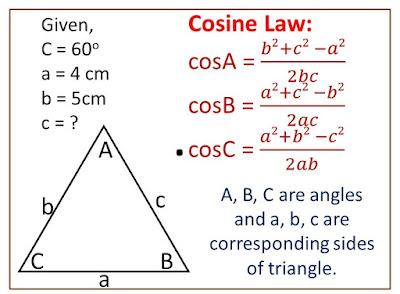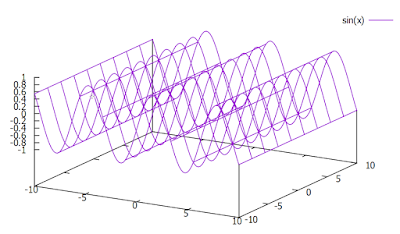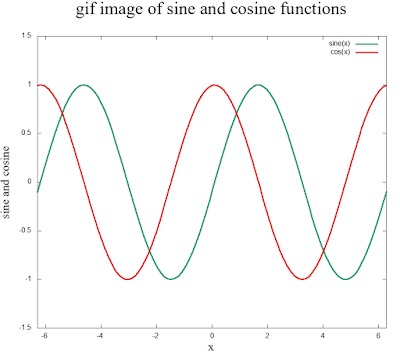NEB grade 11 and 12 maths exam MCQ solved problems | NEB mathematics MCQ solved problems
NEB Mathematics grade 11 and 12 specification grid solutions
Short Solution Problems(Group A)
Rewrite the correct option in your answer sheet.
1. Which of the following is a statement?
a) The fishes are beautiful. b) Study Mathematics
c) x is the capital of country y. d) Water is essential for health.
Correct option: (d)
It because any sentence is considered as a statement if it is either true or false but not both. Among given options, (a), (b) and (c) do not declare truth or falsity. But option (d) declares the truth that water is important for health.
2. The value of: `\sqrt{-16} \times \sqrt{-25}` is,
(a) -20 (b) -20i (c) 20i (d)20
Correct option: (a)
Here,
`\sqrt{-16} \times \sqrt{-25}`
= `\sqrt{-1 \times 16} \times \sqrt{-1 \times 25}`
But `i^2 = -1`, i = complex number.
= `\sqrt{i^2 \times 4^2} \times \sqrt{i^2 \times 5^2}`
= ` i \times 4 \times i \times 5`
= `i^2 \times 20`
= -20. //
Click here for NEB grade 11 maths short solution problems(Group A)
3. If `\angle C = 60^o`, b = 5 cm and a = 4 cm of a `\triangle ABC`, then what is value of c ?
(a) 3.58 cm (b) 4.58 cm (c) 4.89 cm (d) 4.56 cm
Correct option: (b)
Solution: By cosine law of triangle (`\triangle ABC`),
`cosC = \frac{a^2 + b^2 - c^2}{2ab}`
or, `2ab cosC = a^2 + b^2 -c^2`
or, `c = \sqrt{a^2 + b^2 - 2ab cosC}`
or, `c = \sqrt{(4cm)^2 + (5cm)^2 - 2 \times 4cm \times 5cm \times cos60^o}`
or, `c = \sqrt{41 - 40 \times \frac{1}{2}}`
or, `c = \sqrt{41 - 20}`
or, c = 4.58 cm
`\therefore` c = 4.58 cm //
4. In a triangle ABC, `B = 120^o`, a = 1, c = 1, then other angles and sides are
(a) 35, 45, `\sqrt{2}` (b) 10, 50, `\sqrt{3}` (c) 20, 40, 2 (d) 30, 30, `\sqrt{3}`
Correct option: (d)
Solution: By Cosine law,
`cosB = \frac{c^2 + a^2 - b^2}{2ac}`
or, `b = \frac{c^2 + a^2 - 2ac cosB}`
or, `b = \frac{1^2 + 1^2 - 2.1.1.cos120^o}`
`\therefore` `b = \sqrt{3}`.
Also, Using sine law,
`\frac{a}{sinA} = \frac{b}{sinB} = \frac{c}{sinC}`
or, `\frac{1}{sinA} = \frac{\sqrt{3}}{sin120^o} = \frac{1}{sinC}`
Taking first and second ratios,
`\frac{1}{sinA} = \frac{\sqrt{3}}{sin120^o}`
or, `sinA = \frac{sin120^o}{\sqrt{3}}`
or, `A = sin^-1(\frac{sin120^o}{\sqrt{3}})`
or, `A = sin^-1(\frac{\frac{\sqrt{3}}{2}}{\sqrt{3}})`
or, `A = sin^-1(\frac{1}{2}) = 30^o`.
`\therefore` `A = 30^o`
Again, taking second and third ratios,
`\frac{\sqrt{3}}{sin120^o} = \frac{1}{sinC}`
or, `C = sin^-1(\frac{sin120^o}{\sqrt{3}})`
`\therefore` `C = 30^o`.
Thus, required angles are `30^o, 30^o` and side is `\sqrt{3}`.//
5. The cosine of the angle between the vectors `\vec a = \vec i -2\vec j + 3\vec k` and `\vec b = \vec i + 3 \vec j + 3\vec k` is,
(a) `\frac{1}{14}` (b) 14 (c) `\sqrt{14}` (d) 196.
Correct option: (c)
Soution:
Cosine of angle between vectors `\vec a` and `\vec b` is,
`cos \theta = \frac{\vec a \cdot \vec b}{|\vec a| \cdot |\vec b|} .....(1)`
Here,
`\vec a \cdot \vec b = (\vec i - 2\vec j +3\vec k)\cdot (\vec i + 3\vec j + 3\vec k)`
= `\vec i \cdot \vec i - 2\vec j \cdot 3\vec j + 3\vec k \cdot 3\veck`
`\therefore` `\vec a \cdot \vec b = 1 - 6 + 9 = 4`
Also, `|\vec a| = \sqrt{(1)^2 + (-2)^2 +(3)^2} = sqrt{14}`
and `|\vec b| = \sqrt{1^2 + 3^2 + 3^2} = \sqrt{19}`
Usin these values in (1)
`cos \theta = \frac{4}{\sqrt{14} \cdot \sqrt{19}} = \frac{4 \sqrt{14}}{14 \sqrt{19}}`
= `\frac{2}{7 \sqrt{19}} \sqrt{14}`
which is not exact as given in the options. But the possibility of the correct option is (c) because of similar factor `\sqrt{14}`. //
6. The equation of parabola with the vertex at the origin and the directrix y-2 = 0 is,
(a) `x^2 - 8y = 0` (b) `y^2 + 8y = 0` (c) `x^2 + 8y = 0` (d) `y^2 - 8y = 0`
Correct option: (c)
Solution:
A parabola is the locus or path of a point which lies at equal distance from it's focus and directrix.Here given directrix is
y - 2 = 0 or y = 2. This means directric lies on positive y-axis.
So, equation of parabola must be of the form,
`x^2 = 4ay ...(1)`
with focus at (0 , -a)
Since focus lies at equal distance from parabola as it's directrix, so -a =2. It is because directric passes through y-axis and focus also lies on y-axis. This means focus (0 , -a) may also lie on the directrix.
Now using -a = 2, that is, a = -2 in (1),
`x^2 = 4ay = 4(-2)y = -8y`
`\therefore` `x^2 + 8y = 0` is required equation of the parabola, as shown in figure.//
7. A mathematical problem is given to three students Sumit, Sujan and Rakesh whose chance of solving it are `\frac{1}{2}, \frac{1}{3}` and `\frac{1}{a}` respectively.The probability that the problem is solved is `\frac{3}{4}`, the possible value of a are,
(a) `\frac{9}{2}` (b) 4 (c) `\frac{1}{4}` (d) `\frac{1}{8}`
Correct option: (b)
Solution:-
Let's suppose the probability of Sumit, Sujan and Rakesh to solve problem be P(A), P(B) and P(C) respectively. Then
P(A) = `\frac{1}{2}`, P(B) = `\frac{1}{3}`, P(C) = `\frac{1}{a}`
if 1- P(A) is probability that Sumit does not solve problem etc. then
probability that problem is solved = [1 - (1 -P(A)) (1 - P(B)) (1 - P(C))]
or, `\frac{3}{4} = [1 - (1- \frac{1}{2})(1 - \frac{1}{3})(1 - \frac{1}{a})]`
or, `\frac{3}{4} = [1 - (\frac{1}{2})(\frac{2}{3})(\frac{a - 1}{a})]`
or, `\frac{3}{4} = [1 - \frac{2(a-1)}{6a}]`
or, `\frac{2(a-1)}{6a} = 1 - \frac{3}{4} = \frac{1}{4}`
or, `2(a-1) = \frac{6a}{4}`
or, `a-1 = \frac{3a}{4}`
or, `a -\frac{3a}{4} = 1`
or, `\frac{a}{4} =1`
or, a = 4
`\therefore` a = 4 //
8. `\lim_(\theta->0) \frac{sin \theta}{\theta}` is equal to
(a) 0 (b) `\infty` (c) 1 (d) `\frac{0}{0}`
Correct option: (c)
Solution:-
Using L-Hospitals rule,
`\lim_(\theta->0) \frac{sin \theta}{\theta}`
= `\lim_(\theta ->0) \frac{cos \theta}{1}`
= `coso` = 1.//
For NEB grade 12 physics numerical solutions: Visit Link
9. The derivatives of `\frac{4x^2 + 3}{3x^2 - 2}` is
(a) `\frac{-34x}{(3x^2 - 2)^2}` (b) `\frac{30x^2}{(3x^2 - 2)}` (c) `\frac{-32x}{(3x^2 - 2)^3}` (d) `\frac{-31x}{(3x - 2)^2}`
Correct option: (a)
Solution:- Here,
`y = \frac{4x^2 + 3}{3x^2 -2}`
Using quotient rule of differentiation with respect to 'x',
`\frac{dy}{dx} = \frac{(3x^2 - 2) \frac{d}{dx}(4x^2 + 3) - (4x^2 + 3) \frac{d}{dx} (3x^2 - 2)}{(3x^2 - 2)^2}`
or, `\frac{dy}{dx} = \frac{(3x^2 - 2) (8x) - (4x^2 + 3) (6x)}{(3x^2 - 2)^2}`
or, `\frac{dy}{dx} = \frac{24x^3 - 16x - 24x^3 - 18x}{(3x^2 - 2)^2}`
or, `\frac{dy}{dx} = \frac{-34x}{(3x^2 - 2)^2}`
`\therefore` `\frac{-34x}{(3x^2 - 2)^2}` is required derivative. //
10. By Newton's Raphson, the positive root of `x^3 -18 = 0` in (2, 3) is,
(a) 2.666 (b) 2.621 (c) 2.620 (d) 2.622
Correct option: (b)
Solution:-
Given, `f(x) = x^3 -18 .....(1)`
If `x_1` is initial guess root of function f(x), then by Newton's Raphson method, second guess of root will be,
`x_2 = x_1 - \frac{f(x_1)}{f \prime (x_1)} .....(2)`
By direct method, you can gues root as
`x^3 - 18 = 0`
or, `x = (18)^{\frac{1}{3}} \approx 2.62`
so, let initial guess of root be, `x_1 = 2.62`
Taking derivative of (1)
`f \prime (x) = 3x^2`
or, `f \prime (2.62) = 3 \times (2.62)^2 = 20.5932`
Also, `f(2.62) = (2.62)^3 - 18 = -0.015272`
Using these values in (2),
`x_2 = 2.62 - \frac{-0.015272}{20.5932} = 2.62074... \approx 2.621`
`\therefore` `x_2 = 2.621`, which is required root.//
11. Two forces acting at an angle of `45^o` have a resultant equal to `\sqrt{10}` N, if one of the forces be `sqrt{2}` N, then what is the other force ?
(a) 1N (b) 2N (c) 3N (d) 4N
Correct option: (b)
Solution:-
The resultant force R between two forces `F_1` and `F_2` is given as
`R = \sqrt{(F_1)^2 + (F_2)^2 + 2F_1 F_2 cos \Theta } .....(1)`
where `\Theta` is angle between two forces `F_1` and `F_2`.
By given,
`R =\sqrt{10}N`, `F_1 = \sqrt{2} N` and `\Theta = 45^o`, `F_2 = ?`
Using given values in (1),
` \sqrt{10} = \sqrt{(\sqrt{2})^2 + (F_2)^2 + 2\sqrt{2} F_2 cos45^o}`
or, `10 = 2 + F_2^2 + 2 \sqrt{2} \frac{1}{\sqrt{2}}`
or, `8 = F_2^2 + 2F_2`
or, `F_2^2 + 2F_2 - 8 = 0`
or, `F_2^2 + 2F_2 +1 - 1 - 8 = 0`
or, `(F_2 + 1)^2 - 9 = 0`
or, `(F_2 + 1)^2 = 9`
or, `F_2 + 1 = \pm 3`
or, `F_2 = \pm 3 - 1`
Taking + sign, it is because angle between two forces is only `45^o`, this implies that these forcese are not antiparallel. So, `F_2` should have positive value. Taking - sign gives negative value of `F_2` which is not acceptable in this question.
`F_2 = + 3 - 1`
`\therefore` `F_2 = 2` N, which is required force. //
OR
The total cost function of a producer is given as `C = 500 + 30Q + \frac{1}{2}Q^2`. What is the marginal cost (MC) at Q = 4?
(a)Rs. 38 (b) Rs. 34 (c) Rs. 30 (d) Rs. 28
Correct option: (b)
Solution:-
Given cost function is, `C = 500 + 30Q + \frac{1}{2}Q^2 .......(1)`
At Q = 4, marginal cost (MC) = ?
Marginal Cost is the ratio of change of total production cost of any quantity to change in that quantity.
That is, `MC = \frac{dC}{dQ}`
where dC is change in production cost and dQ is change in quantity.
Now differentiating (1) with respect to quantity(Q), we get
`\frac{dC}{dQ} = \frac{d}{dQ}(500+30Q+\frac{1}{2}Q^2)`
or, MC = 30 + Q
At Q = 4,
`MC|_(Q=4) = 30 + 4 = 34`
Thus, the marginal cost is Rs. 34 //











Comments
Post a Comment